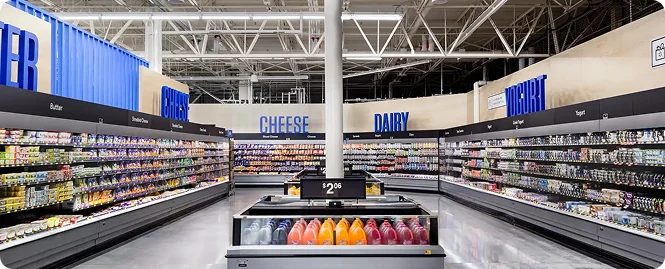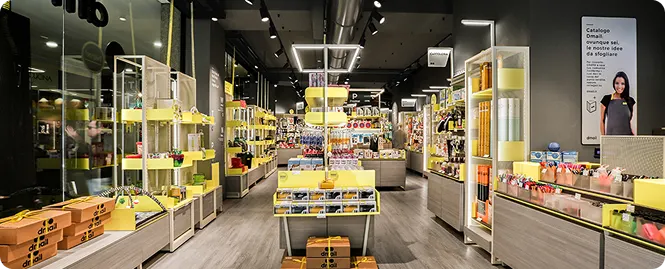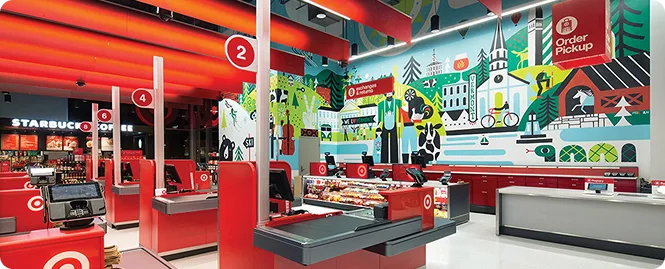How to Open a Convenience Store in Alabama
Table of Contents
Key Takeaways
-
Choosing the right store location is crucial for success. Conduct market research to understand local demand, competition, and customer preferences. A high-traffic area with a strong customer base ensures better store sales and profit margins.
-
A well-structured business plan outlines your business model, profit margins, and operational strategies. It helps attract investors and secure a business loan by demonstrating financial viability and growth potential.
-
To open a convenience store, you’ll need a business license, proper permits, and compliance with local regulations. Choosing the proper business structure (LLC, sole proprietorship, etc.) ensures legal and tax efficiency.
-
Designing an efficient store layout improves customer experience and sales. Investing in essential equipment, a point-of-sale system, and quality inventory helps streamline operations and meet customer needs.
-
Strong marketing strategies, including social media, loyalty programs, and local promotions, help attract customers. Proper staff hiring and training ensure excellent customer service, boosting long-term success in the convenience store business.
Convenience stores in Alabama are thriving as consumers increasingly prioritize quick, accessible, and hassle-free shopping experiences for their daily needs. With busy lifestyles and a growing population, more people rely on convenience stores for everyday essentials, snacks, and fuel. This presents a lucrative opportunity for entrepreneurs and small business owners. However, success in this competitive market requires strategic planning, a strong business model, and a focus on customer service to stand out from the competition.
Before opening a convenience store, it is important to understand the legal requirements, business structure, and necessary permits to run a smooth business. Entrepreneurs must conduct market research, secure proper financing, and choose the right store location to ensure long-term profitability. Additionally, compliance with licenses, permits, and zoning laws is essential to avoid legal issues. A well-planned approach helps convenience store owners maximize profit margins and successfully launch their business in a competitive arena.
Step 1: Researching the Market and Location
Choosing the right store location helps in running a successful convenience store business. The ideal spot should be easily accessible, visible, and located in a high-traffic area. Proximity to residential neighborhoods, workplaces, or highways increases foot traffic. A well-positioned store will attract a strong customer base and boost store sales.
Understanding local competition helps determine how to differentiate your store: research nearby convenience stores, their pricing, product selection, and customer service quality. Additionally, assessing consumer preferences ensures you stock the right products. A store that meets local demand can quickly build a loyal customer base and maintain strong profit margins.
Being located in a high-traffic area improves business sales potential. Consider areas near gas stations, shopping centers, schools, or busy intersections. Parking availability, safety, and ease of access can also impact foot traffic. Evaluating these factors ensures that your convenience store remains a preferred stop for customers, increasing long-term success.

Step 2: Business Plan Development
A well-structured business plan is an important step to launching a successful convenience store business. It should outline your business model, store location, licenses and permits, and financial projections. A clear plan will help secure a business loan, attract investors, and guide decision-making to maximize profit margins and long-term growth.
Your business plan should clearly define both short-term and long-term goals, the range of products and services offered, and estimated store sales. It must also include a breakdown of all operating costs, expected revenue, and profit forecasts. Well-documented financials help in obtaining financing options and maintaining a stable business structure.
Understanding your customer base is key to increasing your store sales. Identify your target market, whether it’s local residents, commuters, or businesses, and customize marketing strategies accordingly. Utilize resources like social media, local promotions, and a loyalty program to attract and retain customers, ensuring long-term profitability for your small business.

Step 3: Legal Requirements and Permits
To legally open a convenience store in Alabama, you must obtain the required licenses and permits. This may include a business license, health permits for selling food, and possibly a tobacco or alcohol permit. Ensuring compliance with state regulations helps avoid fines and keeps your convenience store business running smoothly.
Before securing a store location, check local zoning laws in order to confirm whether retail businesses are allowed in the area or not. Zoning regulations dictate store size, signage, parking, and operational hours. Compliance with these rules ensures your small business can operate without legal issues or unexpected disruptions.
Registering your business structure with the Alabama Secretary of State is a crucial step. Additionally, you’ll need a sales tax permit to collect and remit sales tax on purchases legally. These registrations establish your business as a legal entity and allow you to operate within the state’s business model framework.

Step 4: Securing Financing
Securing funding is a crucial step when opening a convenience store. Various financing options include business loans, personal savings, and investors. Traditional bank loans require a strong business plan and good credit, while alternative lenders may offer more flexibility. Investors can provide capital in exchange for a share in the convenience store business, but it is essential to weigh the pros and cons of each option to determine the best financial path for your store.
When applying for a business loan, having a well-prepared financial and thoroughly reviewed documents can make a significant difference. Lenders typically require a detailed business plan, projected profit margins, operational costs, and expected store sales. A strong financial presentation that clearly outlines your business structure, target customer base, and revenue projections increases the chances of securing good funding. Additionally, demonstrating a solid repayment strategy will help your store build more credibility and trust with lenders.
.webp)
Step 5: Choosing the Right Store Format
One of the first significant decisions when opening a convenience store is choosing between an independent business or a franchise. An independent store allows full control over branding, product selection, and pricing but requires extensive planning and market research. On the other hand, a franchise provides brand recognition, support, and a proven business model, but comes with franchise fees and operational restrictions. Evaluating profit margins, business structure, and long-term goals helps make the right decision.
An independent convenience store business offers more flexibility in terms of inventory, pricing, and marketing strategies but requires licenses and permits, customer base development, and financial planning. Franchises may provide built-in brand recognition, training programs, and marketing support, but they also involve business license requirements, royalty fees, and less decision-making freedom. To choose the best option, assess business goals, store location, available financing, and operational preferences to determine which model best aligns with your vision.

Step 6: Store Design and Layout
A well-planned store layout enhances both efficiency and the customer experience. The entrance should be welcoming, leading customers naturally through high-demand sections like beverages and snacks. Point-of-sale systems should be positioned for easy checkout, while aisles should be wide enough for comfortable movement. Store design should prioritize visibility, ensuring essential products are easy to find. Having proper shelving, signage, and lighting creates an inviting atmosphere, encouraging customers to spend more time and make additional purchases.
Strategic product placement directly impacts your store’s profit margins and customer flow. High-demand items should be placed at eye level, while impulse purchases like candy and small accessories should be kept near the checkout counters. Refrigerated sections should be positioned at the back to encourage customers to walk through the entire store and browse. Additionally, seasonal promotions and loyalty programs can boost store sales by placing featured products in high-traffic areas to attract more attention.

Step 7: Purchasing Equipment and Inventory
Setting up a convenience store requires key equipment, including cash registers, point-of-sale (POS) systems, shelving, and refrigeration units. Efficient store layout depends on selecting durable fixtures that optimize space and enhance customer experience. Security cameras and lighting are essential to ensure safety, while storage units help maintain organized inventory management.
Establishing relationships with reliable suppliers ensures a steady flow of food, drinks, snacks, and household essentials. Partnering with wholesalers can help maintain profit margins while offering competitive prices. Consider working with multiple suppliers to compare prices and secure the best deals. Inventory should align with customer preferences and seasonal demand.
Effective inventory management helps reduce waste and prevent stock shortages. Utilize inventory tracking software to monitor sales patterns and reorder products accordingly. Convenience store owners should balance between stocking essential items and rotating seasonal products. Regular audits and supplier negotiations ensure cost-effective purchases while keeping the store well-stocked and organized.

Step 8: Hiring and Training Staff
Hiring the right team is crucial to run a successful convenience store business. Look for candidates that exhibit strong customer service skills, are reliable, and pay attention to detail. Conduct thorough interviews to assess their ability to handle transactions, assist customers, and maintain store cleanliness. Background checks and reference verification can further help ensure trustworthiness. Offering competitive wages and scheduling flexibility can attract dedicated employees further contributing to efficient operations and a positive shopping experience.
A well-structured training program helps ensure that your store’s employees understand cash handling procedures, inventory management, and store policies. Train your staff to operate the point-of-sale (POS) system, process transactions efficiently, and handle customer inquiries professionally. Emphasize the importance of maintaining a clean, organized store and following safety protocols. Regular workshops on customer service skills can help improve interactions and build customer loyalty quickly. Ongoing training informs employees about new products, promotions, and security measures.

Step 9: Marketing and Promotion
A strong marketing strategy is essential to attract and retain customers in a convenience store business. Start by identifying your target customer base and understanding their needs. Use online and offline strategies, including signage, flyers, and digital marketing. Offering promotions and seasonal deals increases foot traffic and boosts store sales.
Leverage local advertising through newspapers, radio, and community bulletin boards to promote your store. Social media platforms like Facebook and Instagram help engage customers with special offers, updates, and events. Encourage customer interaction by running giveaways or limited-time discounts. Consistent branding and engagement on digital platforms strengthen your store’s presence.
Connecting with the local customer base helps create a loyal clientele. Support community events, sponsor local activities, or offer discounts to regular customers. Implementing a loyalty program that rewards frequent shoppers with discounts or points encourages more sales. Providing excellent customer service enhances customer satisfaction and establishes long-term customer relationships.

Step 10: Opening Day Preparations
As the opening day approaches, final preparations are key to ensuring a smooth launch. Make sure that all licenses and permits are in place, shelves are stocked, and staff is well-trained. Spreading the word through social media, local advertising, and signage can help build anticipation and attract your first customers.
A soft opening allows you to test operations beforehand and gather customer feedback before the official launch. Invite a small group of customers to experience the store, assess staff performance, and identify any areas for improvement. This helps refine processes and ensures a more seamless experience for the grand opening.
Offering opening-day promotions encourages foot traffic and generates interest. Consider discounts, special offers, or giveaways to draw in new customers. A loyalty program can also be introduced to build long-term customer relationships. The goal is to create a strong first impression and establish a reliable customer base from day one.

Conclusion
Opening a convenience store in Alabama involves thorough market research, securing the right location, developing a solid business plan, obtaining the necessary licenses and permits, and securing financing. Each step is crucial in ensuring long-term success, from choosing the right store format to hiring reliable employees and marketing your business.
Running a store comes with risks, from theft and property damage to liability claims. Having the right business insurance helps protect your investment, covering unexpected losses and ensuring financial stability. Policies like general liability, business interruption, and commercial property insurance can safeguard your store, employees, and assets from potential risks.

